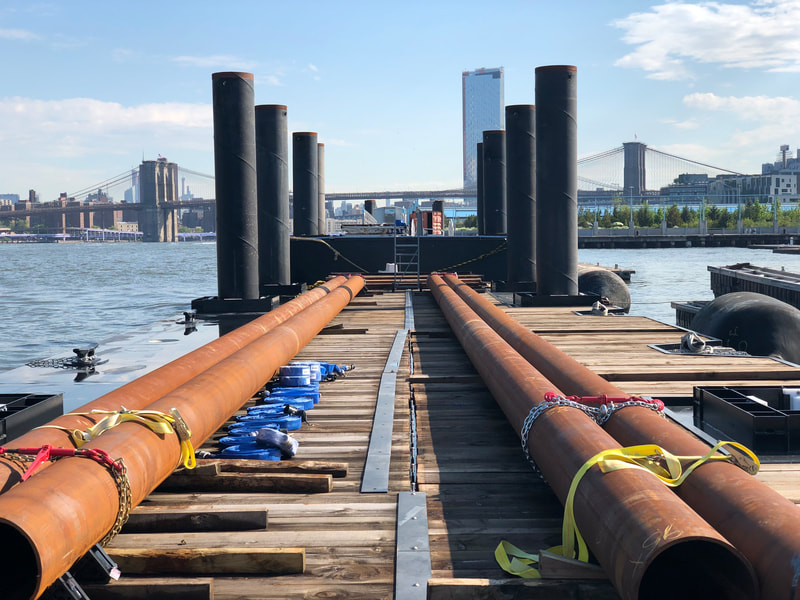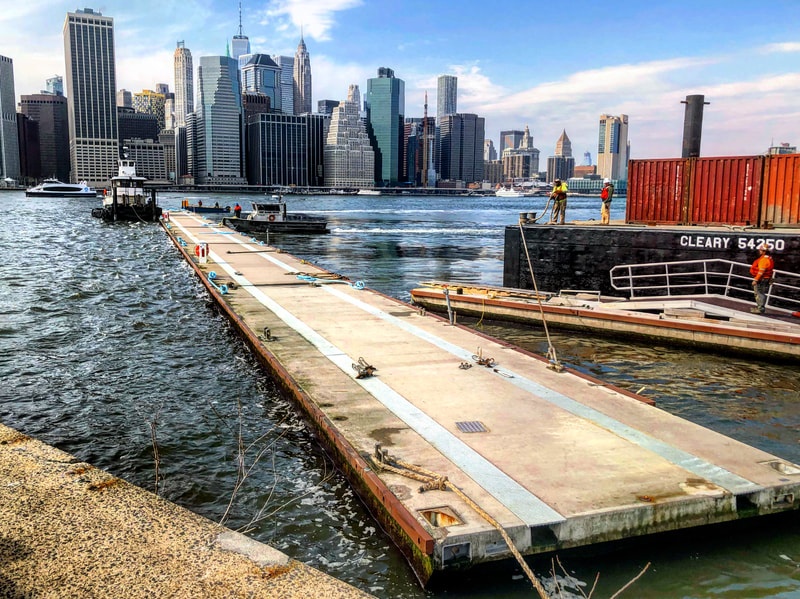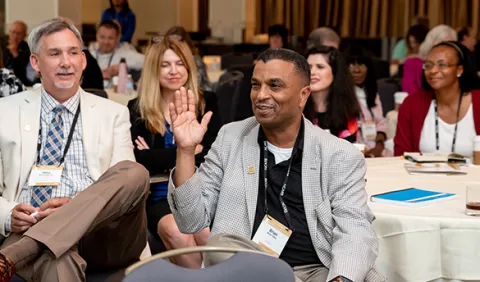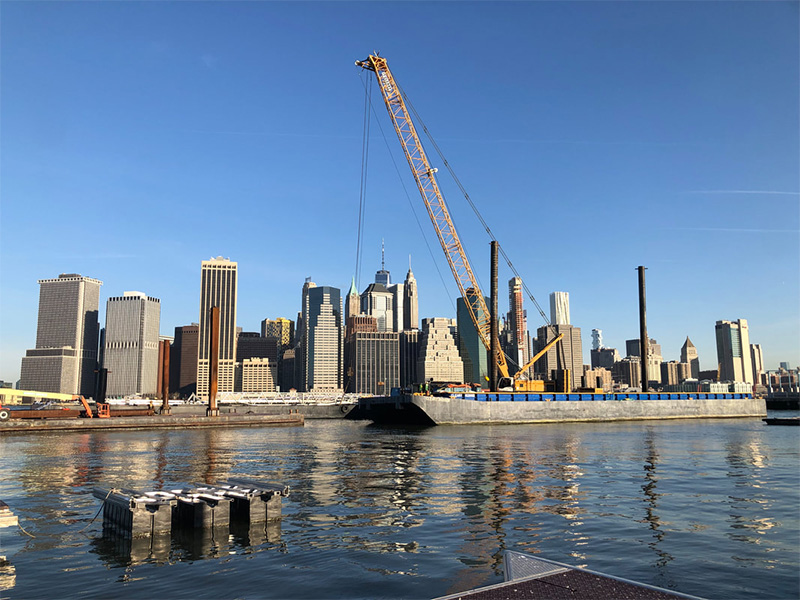We took some time to chat with Indigo River multidisciplinary architect Dena Prastos, AIA, NCARB, about her passion for waterfront infrastructure and resiliency, as well as the challenges she’s overcome throughout her career. Dena also shares why she is passionate about equity and inclusion in the field of architecture, how growing up in Alaska shaped her views of the built environment, and her experience as an active member of the Think Tank/Re-Think Tank Alumni group.
What are some of the greatest challenges you’ve had to overcome in the architecture profession?
Overcoming a lack of confidence around my technical knowledge out of school truly shaped my career. When I first finished my five-year undergraduate degree, I was intimidated by engineering and construction at large. However, I have always had a knack for seeing challenges as opportunities and an enthusiasm for pushing myself out of my comfort zone—that mentality has served me well in my career. I faced my lack of confidence head-on by getting a master’s degree in civil engineering and very intentionally began my career with a heavy, civil, self-perform contractor working on a design-build project. When I think back on that time, what I was experiencing was a fear of the unknown. I have learned you cannot reach your full potential by staying in your comfort zone. When I push myself to the edge of my limits, that is when I grow the most.
Tell us about your experience growing up in Alaska and how this shaped your view of the built environment.
I was born and raised in Anchorage, Alaska, and as such, I have a deep-rooted appreciation for nature and humankind’s ability to design, build, and create infrastructure in some of the world’s toughest conditions.

What is the greatest piece of advice you have received throughout your career?
Early in my career, my first mentor said to me, “No one will care more about your career than you.” I thought it was harsh at the time, but I have learned to embrace the notion and have experienced it to be true. It is so important that you have the guts to own your career. You have one life, and what you do for a living makes up a large part of your time. What helped me was to figure out what specifically gave me satisfaction and then proactively lean into it. Do not let your company, your boss, your competition, or anyone else define you. As with all things, design is an iterative process, so be open to revisiting and redesigning the definition you give yourself.
You have a multidisciplinary background regarding your education and experiences. What impact has that had on you as an architect?
First and foremost, the empathy to understand where other disciplines are coming from and how to communicate effectively with those in different disciplines. While architects, engineers, and contractors have a lot in common, they wear different hats and have distinct approaches that, when harnessed correctly, can be highly complementary. My reason for diversifying my experiences early in my career was to make me a better designer—but a beneficial byproduct is that I have become a better team member.

Tell us about your experience volunteering for the Think Tank.

Volunteer With NCARB
Want to shape the future of architecture? Get involved by applying for to serve on a licensing board.
I am incredibly grateful to NCARB for my experience with the Think Tank. It opened my eyes to others’ struggles and successes within the profession. It also presented me with a platform to continue industry-scale conversations through alumni events and conferences, as well as be an active member of the Licensing Advisor Community. I enjoy thinking seriously about and engaging in meaningful dialogue around the future of our profession, and it is up to us as newly licensed professionals to help shape and direct it.
You’re licensed in Connecticut, New Jersey, and New York—how has having an NCARB credential helped expand your career?
I greatly appreciate having my licensure credentials uniformly “centralized” in one location, so I can efficiently apply for reciprocity with other states through a simplified process.
What inspires your passion for the built environment?
Both the way we work and the world we work in is constantly changing and evolving. It will be up to not only the individual architect but also firms and the industry to demonstrate agility and continue to adapt in real time. The climate extremes of yesterday are today’s new normal. We must adapt to a world in which the climate is less predictable and, in many cases, less favorable than it has been in the past. We must reconsider the relationship between the natural and the built environment. Historically, the emphasis has been on managing conflicts between people and ecosystems. Now, there is a need to look at how these systems can instead work together, recognizing that a healthy society relies upon healthy ecosystems. When designing with nature, you must be humble and realize that no one can do it alone. It is important to work with other disciplines, as understanding natural processes is an exceedingly complex undertaking. It is by nature that we can learn, advance, replicate, and scale our actions to address goals. It is by nature that we can prepare ourselves for the future.

Why do you think it’s important to have a focus on equity, diversity, and inclusion (EDI) in the architecture profession?
Architects design our world. If we want a world for everyone, then everyone must be represented, at every level, in the design of our world. The question then becomes, “How can we change course?” If we want to create a better world, we must first create an enabling environment by investing in the people and systemic processes to bring them together. We must make room, create safe spaces, and (re)build trust. We must empower everyone to tap into each other’s knowledge. This diversity of talent allows for a comprehensive understanding of our challenges, which inform our plans of action—so that instead of replicating the past, we can invest in a better future.
What is something you wish people knew about your work in waterfront infrastructure and resiliency?
I’m an architect who does not work on buildings. I work in that dynamic littoral zone where nature meets the humanmade. My focus is on resilient, sustainable infrastructure that responds progressively to climate change. Nature is very persistent—it will always win, eventually. It is a humbling place to work. A structure can be designed and calibrated to a local climate, but sooner or later, the latter becomes both costly and environmentally detrimental. We must always be aware of the constraints of a place and design within nature instead of ignoring it. We are entering a point in the industry where "resiliency" and "sustainability" will change from being a checklist of items outlined to fulfill third-party classification criteria to being inherent in our design process—because resilient and sustainable qualities have come to reflect what our society values and what our planet demands. Twenty-first-century practice calls for new, integrated perspectives on development, resiliency, and system-based thinking in infrastructure development. To move forward, it is important to combine a sense of urgency with a willingness to be patient.
Know an architect you think should be featured on the NCARB Blog? Send an email to communications@ncarb.org.